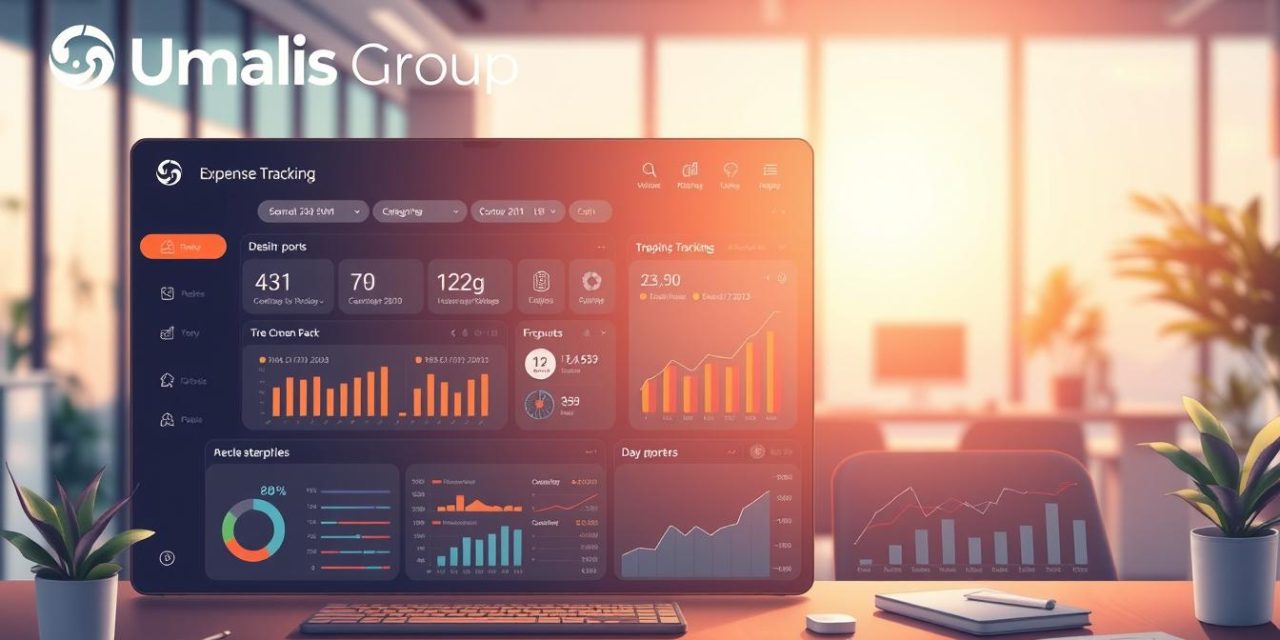Surprising fact: companies that fail to categorize spend waste up to 8% of annual revenue simply because finance teams play detective at month end.
We help you stop that drain. By structuring every expense into clear categories, you gain instant visibility into where money goes and which costs matter most.
Payroll, subscriptions, rent, servers, and travel are often the biggest drivers of cost. When they are tracked in real time, tax deductions become easier and audits feel routine rather than risky.
Our approach shows you how to categorize at the point of payment, use employee cards with limits, and automate records so receipts are never missing.
Result: faster decisions, healthier cash flow, and a finance function that supports growth without late-night classification work. We speak to the realities of running a company in France and make sure your processes align with deductibility rules.
Table of Contents
Key Takeaways
- Structure spend into consistent categories to gain real-time visibility.
- Prioritize payroll, subscriptions, rent, servers, and travel as top cost drivers.
- Automate categorization and use employee cards to avoid month-end backlogs.
- Accurate tracking reduces tax risk and preserves deductible items.
- Apply simple steps this week to improve cash flow and governance.
Ultimate Guide Overview: Mastering Costs to Grow Profit in France
This guide gives a clear map to control costs and protect profit in France.
It lays out common and often overlooked categories—payroll, rent, utilities, software, marketing, travel, servers, insurance, professional services, training, equipment, office supplies, hybrid allowances, fuel, and perks.
Who it’s for: independent professionals and growing firms that need a practical, France-focused framework to convert learning into daily practice.
What this guide covers and who it’s for
- Clear category definitions and where savings typically appear.
- How to set categories in your accounting tool and attach records at payment.
- Checklists to make month-end reconciliation a review, not detective work.
How informational intent maps to actionable steps today
We show how to use your time efficiently: define a standard chart, set approval rules, and run real-time dashboards so you can adjust spend mid-month.
Result: you move from research to action—align payments, embed records at the point of transaction, and keep tax compliance front of mind for every payment.
Business expenses: what they are, why they matter, and how they impact taxes
A precise distinction between short-lived spend and capital items changes how accounts look at year-end. We define a business expense as a cost incurred to operate and generate income. That differs from an asset, which gives multi-year benefit, and from a tax imposed by law.
In France, deductibility rests on the rule of company interest and normal management. Personal costs, lavish items, or fictitious claims raise audit risk and may be disallowed.
Correct classification affects profit, cash flow, and taxable income. Mislabelled items can inflate costs or hide margins. For durable goods, capitalize; for short-lived purchases, record as an expense.
- Keep receipts and records to justify deductions.
- Limit claims for personal use of office or home and apportion clearly.
- Watch thresholds: high-value gifts or excessive director pay can be reintegrated into taxable results.
Practical step: set a monthly review to reconcile accounts and validate that payments reflect real services and reasonable costs. This habit protects profit and keeps your tax filings confident.
Set up clear expense categories and real-time tracking
Start by assigning each payment a clear label the moment it happens to stop guesswork. This simple habit prevents month-end detective work and keeps your ledger tidy all year.
Essential categories finance teams rely on
Define a short, standard list: payroll, rent, utilities, software, marketing, travel, and insurance. Keep the list visible to every team member so every payment maps to a category at once.
Best practice: categorize at the point of payment, not month-end
Have the payer pick a category or let your virtual card auto-tag by supplier. This saves time and reduces reclassification later.
Digitized records and real-time visibility to avoid “detective work”
Attach receipts and digitized records to each transaction. Use cloud tools that show live dashboards so you can pause or redirect funds when a category trends high.
- Track subscriptions with owner, renewal date, and purpose to avoid surprise renewals.
- Set limits and approvals on cards to balance control and speed.
- Run a weekly check: confirm missing receipts, review category variances, and scan unusual vendors.
When everyone follows the same process, you protect margins with minimal friction and gain time to focus on growth in France.
Major cost centers: where companies actually spend money
When you map core cost centers, decisions about space, people, and tech get clearer. This view helps you weigh value against total spend and set guardrails that protect cash flow in France.
Payroll, taxes on payroll, and employee perks
Payroll is often the largest cost for a company. Count employer taxes, social charges, and perks as part of the total cost of employment.
Investing in people usually yields more value than the headline salary suggests, but you must budget for onboarding, benefits, and mandatory contributions.
Rent and utilities in an evolving office reality
Hybrid work changed the office equation. Right-size your rent, renegotiate terms, and track utilities—electricity, Wi‑Fi, water—as variable costs tied to occupancy.
Use tagging to compare office-heavy months with hybrid periods and trigger alerts when a cost center exceeds forecast.
Servers, website maintenance, and hidden tech costs
Cloud hosting, storage, CDNs, and monitoring can be hidden high-cost items as you scale. Budget for growth scenarios and quarterly vendor reviews to avoid surprises.
« Adopt a total-cost-of-ownership view: it clarifies trade-offs and aligns spending with ROI. »
- Map insurance to actual risks, not legacy cover.
- Set alerts for maintenance and services budgets.
- Review vendors quarterly and tag costs consistently.
Software subscriptions and tools: control the fastest-growing expense
Subscriptions often creep up unnoticed, turning dozens of small charges into a major annual drain.
Audit first: list every software, owner, renewal date, seat count, and purpose. Flag overlaps and low‑use items for consolidation.
Use virtual cards for subscription payments so you can pause or cancel a service without affecting other vendors. Tie each card to an owner and a single payment method to keep the approval trail clear.
Set simple approval rules for new tools: a short business case, a security check, and a finance sign‑off. Standardize license counts to match active users and avoid paying for idle seats.
- Quarterly reviews catch “set‑and‑forget” renewals before the year locks rates.
- Define KPIs—adoption and usage—to decide whether a service earns renewal.
- Document deprovisioning so orphaned accounts do not generate further payments.
« Shift subscriptions to dedicated virtual cards and assign clear owners to stop shadow IT growth. »
Result: faster control, fewer surprises, and clearer alignment between procurement, IT, and finance as you protect your company’s cash and operational security.
Advertising, marketing, and professional services that drive revenue
Marketing and external services can be engines of growth — or silent budget leaks without clear rules.

Start by mapping the full marketing mix: performance ads, creative production, PR, and retained agencies. Link each channel to a measurable outcome so you can see how spend drives revenue.
Governance matters. Set pre-approval thresholds and monthly caps by channel. Require statements of work for any consultant or agency, with clear deliverables, timelines, and account ownership.
- Run a regular performance cadence to reallocate budget from low-performing channels to the highest-ROI campaigns.
- Separate brand-building from direct-response in reports to avoid misleading comparisons.
- Centralize vendors to reduce duplicate services and negotiate better rates as the company grows.
« Document scopes and postmortems: knowledge carries forward and unexpected fees shrink. »
Result: tighter control of advertising and marketing spend, clearer accounts, and professional services that scale without surprise costs. This protects cash and keeps business expenses transparent.
Travel, entertainment, and client-facing costs done right
Face-to-face meetings still close deals, but only when trip plans reflect clear commercial purpose. We help you decide when travel is justified and when a virtual meeting will protect your budget and time.
Hybrid approaches let you reserve in-person visits for high-impact meetings. Tie approvals to expected revenue or a clear next step to prioritise trips by ROI.
When in-person makes commercial sense
Set booking rules and preferred vendors to reduce variability and secure negotiation leverage. Apply sensible per diem limits that balance comfort and control.
Separating meals from entertainment for tax purposes
Document purpose, attendees, and outcomes. Meals directly tied to negotiations often get more favourable tax treatment than entertainment like sporting events.
- Require a receipt and concise note at the point of spend.
- Train teams to tag meals vs. entertainment to avoid reclassification.
- Choose mileage or actual-cost reimbursement based on trip type.
- Track post-trip outcomes to validate the spend and refine future policy.
« Clear rules and timely receipts turn client travel from a cost centre into a strategic tool. »
Home office, hybrid work setups, and office supplies
Set clear rules for home setups so remote work stays productive and simple to reconcile.
Stipends and connectivity: Offer fixed allowances for ergonomic chairs, monitors, and co‑working memberships. Keep each stipend capped and tied to approved vendors to avoid overspend.
Stipends for ergonomic gear, co‑working, and connectivity
Make stipends conditional on a short justification and an invoice upload. Use virtual cards for online purchases so each purchase links to an owner and an invoice.
Office supplies vs. equipment and furniture
Classify small items—pens, paper, notebooks—as office supplies. Treat durable furniture and monitors as assets and record them in an asset register.
- Allocate a home workspace percentage based on floor area and keep simple calculations with supporting invoices.
- Set price caps for chairs, screens, and paper to standardize quality.
- Label assets and note where they are used—home or office—to simplify audits and insurance records.
| Item | Type | Policy |
|---|---|---|
| Ergonomic chair | Asset | Cap at €400, invoice required, register entry |
| Monitor | Asset | Cap at €250, virtual card preferred, tagged to user |
| Pens & paper | Office supplies | Consumable, no asset register, monthly consolidation |
| Co‑working membership | Service | Monthly stipend, approval + invoice |
Vehicles, fuel, and mileage: reimbursements and record-keeping
A clear logbook and simple rules cut uncertainty and speed up reimbursements for travel and car use.

Maintain a single logbook that captures date, purpose, start/end odometer, and route for each trip. This creates the records you need to justify fuel, repair, and insurance claims during the year.
Logbooks, per-kilometer reimbursement, and choosing methods
When travel is frequent, per-kilometer mileage often reduces admin and simplifies tax reporting. For mixed-use cars, claim only the business portion. Keep original receipts for fuel and repairs; expenses can be claimed once.
« Simple, consistent logs protect your team and make audits routine rather than risky. »
- Use a standard template and require odometer readings on every entry.
- Decide between mileage and actual-cost methods based on trip volume and admin capacity.
- Set clear policy for personal vs. business use and update reimbursement rates as rules change.
| Item | What to keep | Action |
|---|---|---|
| Logbook | Date, purpose, odometer | Monthly reconciliation |
| Fuel & repairs | Receipts | Match to logbook |
| Reimbursement | Mileage or actuals | Approval workflow + timely pay |
| Insurance | Policy details | Align cover to use |
French deductibility rules: what you can and can’t deduct
Not every cost you pay will reduce taxable income — French rules are strict on purpose and proportion. The core test is simple: the item must serve the company’s interest and reflect normal management.
“In the interest of the company”: normal management, not personal use
Deductible items must relate directly to commercial activity. Personal charges for managers, residence costs, or family-type receptions are disallowed and will be reclassified by tax inspectors.
Exclusions: personal, luxury and lavish items
Yachts, recreational hunting, and purely private leisure are not deductible. Professional hunting or fishing may be allowed only when business purpose is indisputable.
Excessive items: gifts and director pay
Gifts above €3,000 yearly must appear on the overheads statement, except promo items under €73 TTC each. Remuneration must match actual work; limits apply and are assessed against role and company size.
« Keep documentation proportional: purpose, beneficiaries, and invoices make the difference in an audit. »
| Area | What to keep | Why it matters |
|---|---|---|
| Reception | Invoices, guest list, purpose | Shows reasonableness for tax review |
| Gifts | Unit cost, beneficiary, annual total | Ensures correct overhead reporting |
| Remuneration | Contracts, timesheets, market comparators | Proves link to income-generating work |
Practical step: before approving any cost, confirm business purpose, proportionality, and that a clear receipt or invoice will be filed. For social and compliance questions see our note on social contributions and obligations.
Conclusion
Wrap up with practical steps that protect cash, reduce audit risk, and free time for growth.
Define clear categories, enforce approvals, capture a receipt for every purchase, and monitor budgets in real time. Use card controls and credit limits to isolate payments and simplify audits.
Follow a 30-60-90 plan: month 1—activate card rules and track subscriptions; month 2—audit software and marketing; month 3—formalise policies for office, home, and travel.
Consolidate tools, set thresholds for rent and maintenance, and prioritise high-impact areas like software, marketing, and travel. In France, always check that each expense serves the company interest, is proportionate, and carries proper documentation.
Keep this checklist close: simple rules today mean steadier revenue and stronger financial resilience tomorrow.
FAQ
What are the core categories I should track to control company costs?
Track payroll and related taxes, rent and utilities, software subscriptions, marketing and advertising, travel and mileage, insurance, professional services, and office supplies. Use real-time tools to tag payments at point of purchase so invoices, receipts, and card transactions map to these categories immediately.
How do I know whether a purchase is an expense or an asset for tax reporting in France?
Classify items used less than a year and of limited value as expenses (e.g., stationery, minor repairs). Capitalize larger, long-lasting items like computers, furniture, or vehicles as assets and depreciate them. Consult your accountant to apply French tax thresholds and ensure correct treatment on VAT and corporate income tax filings.
What documentation do I need to justify deductions to French tax authorities?
Keep clear receipts, invoices with supplier VAT numbers, purpose notes, travel logs, and proof of payment such as bank statements or corporate card records. For meals or gifts, document attendees, business purpose, and amounts to demonstrate proportionality and business intent.
How can I better control fast-growing software and subscription costs?
Audit all SaaS licenses quarterly, consolidate overlapping tools, negotiate enterprise pricing, and use virtual cards with preset limits for new subscriptions. Assign owners for each service and require approval workflows to prevent shadow IT and redundant fees.
What’s the simplest method to reimburse mileage for remote or hybrid workers?
Choose between per-kilometer rates or actual-cost reimbursement. For simplicity, use a standard per-km allowance tied to local tax guidance, require digital logbooks or apps for trip validation, and store mileage claims with dates, purpose, and start/end addresses.
How should I treat client meals and entertainment to remain compliant?
Separate business meals (documented client meetings, clearly business-related) from entertainment (events with mixed personal benefits). Keep detailed notes: who attended, business reason, and receipts. Apply French rules on deductibility and gift thresholds to avoid reclassification as personal benefit.
Are home office costs deductible and how do I justify them?
Home office costs may be deductible when spaces are used primarily for professional activity. Use stipends or a pro rata method for rent, utilities, and connectivity; keep contracts, receipts, and a clear allocation formula. For freelancers, precise records help when tax authorities assess legitimacy.
What governance prevents marketing and agency fees from ballooning month to month?
Implement budget governance with monthly caps, approval tiers, and KPI-linked releases. Require statements of work, invoicing schedules, and periodic ROI reviews. Centralize vendor management to spot overlapping campaigns and renegotiate or consolidate services.
How do I manage insurance and professional services costs while keeping coverage adequate?
Review policies annually, bundle covers when possible (professional liability, cyber, property), and compare quotes from major insurers like AXA or Allianz. For legal and accounting services, consider retainer models that balance predictable fees with access to expertise.
When should I capitalize an equipment purchase rather than expense it immediately?
Capitalize when the item has a useful life beyond one year and exceeds your capitalization threshold. Examples: servers, high-end workstations, or office furniture. Depreciation schedules spread the cost over useful life and align tax treatment with accounting standards.
How can digital tools help avoid “detective work” at year-end?
Use integrated accounting platforms and expense management apps to capture receipts at purchase, match bank and card feeds to invoices, and provide dashboards for real-time cash flow and category spend. This reduces manual reconciliation and speeds month-end close.
What counts as excessive or non-deductible spending under French rules?
Lavish personal expenses, recreational purchases (yachts, hunting), and gifts above regulated thresholds can be non-deductible or trigger tax adjustments. Directors’ remuneration and benefits must be proportionate; keep justification and market comparators to support deductibility.
How do I set up approval controls for corporate cards and supplier payments?
Configure multi-level approvals based on amount, vendor category, and project. Use virtual cards for online subscriptions with single-use limits. Integrate approval flows with accounting software so payments require matching invoices before release.
What records should I keep for audits and how long?
Retain invoices, receipts, contracts, payroll records, mileage logs, and VAT documents. French tax law generally requires keeping documents for six years; some payroll or contractual records may need longer retention. Store digital copies securely with audit trails.
How do expense practices affect cash flow and profitability?
Timely categorization and controls improve forecasting and free up working capital. Reducing redundant subscriptions, renegotiating rent or service contracts, and optimizing headcount costs directly increase operating margin and available cash for growth.





